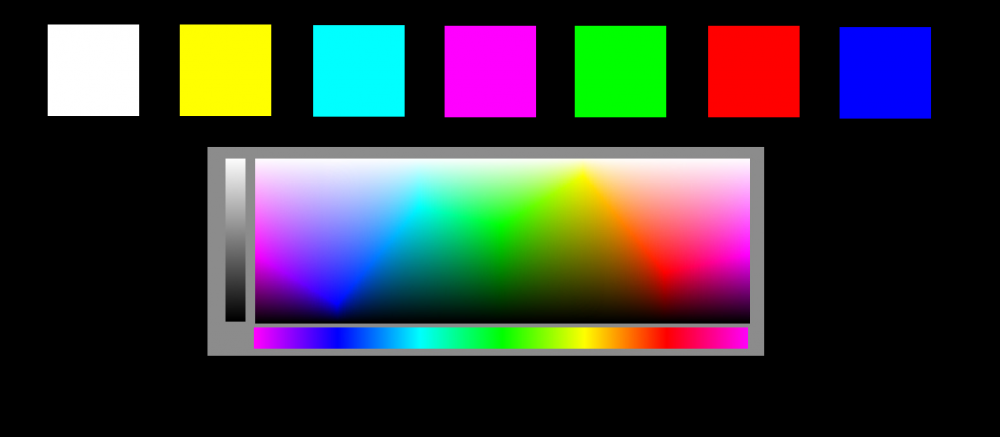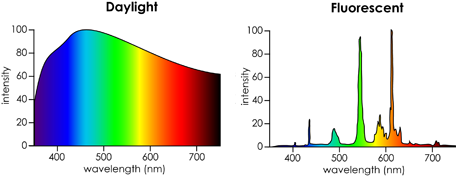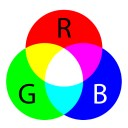

Mehmet Saygın
-
Posts
44 -
Joined
-
Last visited
-
Days Won
1
Content Type
Profiles
Forums
Events
Posts posted by Mehmet Saygın
-
-
3 hours ago, koti said:
You are mistaken. Two healthy individuals will perceive color differently based on many factors including previous experiences, psychological factors, etc. Color perception is subjective and its not a myth, its a well known fact, we all see color differently.
No,I am right, your thoughts are more emotional. If we have the same S,M,L cones (except colorblinds and tetrachromats) ,everyone see the same color. Your ideas are more about colors that people feel. My approach is physical, your approach is psychological. Everyone see the same, but feel about different because of own experiences. That is the key.
2 hours ago, koti said:There is a lot of research on this but it might be a difficult subject to fully grasp - color is only in your mind. It’s a sensation, just like touch is. Color doesn’t have any physical reality of it’s own, at least not outside your head. This might sound strange but its confirmed by research - Color is not a property of the thing that’s causing the sensation. So in fact grass is not green and the sky is not blue, rather they have physical properties that make you perceive green and blue, but even that’s true only sometimes.
If everyone see colors differently,the life will be not easy. (i.e. problems that color-blind people feel in the traffic)
-1 -
25 minutes ago, StringJunky said:
I'm suggesting the apparent lightness/brightness of a colour is a physiological phenomenon. It's not to do with physics, as in the objective properties of colours.
Lightness is related to reflection, brightness is related to how we perceive. These things are different concepts.
-1 -
1 hour ago, koti said:
human perception which is different for everyone
This is the most common myth, Is the color I perceive same as the color you perceive ?
The answer is absolutely "yes" if you don't have a color blindness or tetrachromacy, because we all have the same color perception. A normal trichromat human have S,M and L cones which detects short,medium and long wavelengths respectively. Color taste and color perception are different things. Color taste is subjective but color perception is not subjective. Let's be aware of this.
The question is simple,there is no need to make it hard.
"If we think about all possible color hues and these colors are saturated ( pure hues without lighter shades ), yellow is the second lightest color next to white and it is also the closest color to white. How can this situation be explained physically ?"
1 hour ago, StringJunky said:I don't think you can because it's physiological trait that has evolved to delineate finer variations of green through yellow better than the other. colours.
No.
It can be true for brightness or perceiving more bright the variations of green through yellow, but your answer is not related to lightness.
-1 -
7 hours ago, koti said:
Im not sure I understand your question
This is my original question which is asked by me

"If we think about all possible color hues and these colors are saturated ( pure hues without lighter shades ), yellow is the second lightest color next to white and it is also the closest color to white. How can this situation be explained physically ? ( I mean here the lightness, not brightness. If we are talking about the brightness, lime green is perceived by human eye as a brighter color than white, because our cones are most sensitive at the 550 nm wavelength.)"
0 -
On 07.04.2018 at 8:29 PM, studiot said:
You first need to set out whether you are discussing the colour (subtractive colour) of some object such as a painted wall or the light from a light source (additive colour).
I arrange it my question like this, what is the answer for subtractive color theory and what is the answer for additive color theory ?
0 -
1 hour ago, studiot said:
You first need to set out whether you are discussing the colour (subtractive colour) of some object such as a painted wall or the light from a light source (additive colour).
For both subtractive and additive color
0 -
If we think about all possible color hues and these colors are saturated ( pure hues without lighter shades ), yellow is the second lightest color next to white and it is also the closest color to white. ( I mean here the lightness, not brightness. If we are talking about the brightness, lime green is perceived by human eye as a brighter color than white, because our cones are most sensitive at the 550 nm wavelength.) How can this situation be explained physically ?
0 -
41 minutes ago, Bender said:
Then what exactly de is your question?
We sample only three values of a spectrum. More degrees of freedom are lost to us.
I mean according to Sir Isaac Newton, the white light is mixture of six monochromatic lights which are violet,blue,green,yellow,orange,yellow. These lights are available in daylight almost the same amount,but we can not to say this for flourescent light spectrum. Altough, how eye perceives the flourescent light as a white light ?
0 -
1 hour ago, studiot said:
So the color of the flourescent is depending the phosphor coating color. The actual color of flourescent light isn't white. The white phosphor coating gives the white color to flourescent light, is this the answer ?
18 minutes ago, Bender said:We have three types of colour sensitive cells in our retina. If different spectra trigger them all equally, we see them as equal.
But this is the reason why I asker this question. The monochromatic light distribution of flourescent light is not similar to daylight. I mean there is a big light intensity increases in some narrow band,but the other regions have very low intensity values compared to the these regions.
0 -
-
On 02.04.2018 at 11:54 PM, Hasan Özel said:
Hi Everyone,
I want to know that which one these case is correct, Case 1 or Case 2. I mean, Is the visible spectrum as bright as on the right side or as dull as on left side in reality ? For example,the appearance of monochromatic yellow (570-590 nm) and cyan (475-495 nm) light looks like as Case 1 or Case 2. In other words, Is there any difference between monochromatic yellow-cyan lights and [yellow=green+red(500-730 nm)]-[cyan=blue+green(380-570 nm)] lights shown like on figure ?
I think this is the answer of your question.
There is a difference between monochromatic yellow (570-590 nm) and yellow(500-730 nm),but not as you think.
Yellow = Green(500-570 nm) +Red (620-730 nm) light and monochromatic yellow(570-590 nm) is the same thing,because our eyes integrates Green+Red=Yellow and this combination of the light also a narrow range likes monochromatic yellow. But yellow(500-730 nm) is a different light,this light has a wider range and continuous spectrum. Both monochromatic yellow light and Yellow = Green(500-570 nm) +Red (620-730 nm) light has a lemonish yellow color. On the other hand, yellow(500-730 nm) has a creamy white color. This is the key.
 1
1 -
1 hour ago, MaximThibodeau said:In radiometry, irradiance is the radiant flux (power) received by a surface per unit area.
Irradiance is often called intensity because it has the same physical dimensions.The Planck–Einstein relation connects the particular photon energy E with its associated wave frequency f:
E = h fh = 6.626070040(81)×10−34 j*sblue: 495 - 450 = 45
green = 570 - 495 = 75
yellow = 730 - 500 = 230
red = 730 - 620 = 110
white = 730 - 450 = 280Power mean Energy/time could lead to:(depending on the scope of your school class?)for blue: E = (hf2 - hf1)/45 because of the linearity
for white: you take the two triangles: but your data are not correct: yellow 730I dont know, what is your school level?Thanks for a detailed information, I am a highschool student.
The range of yellow is described as 500-730 nm,because the yellow light reflects between all green-red part of visible spectrum in this question. It means that the light is not monochromatic pure yellow light (570-590 nm) as you think.
0 -
17 minutes ago, swansont said:
If all of the blue light is absorbed, and only some of the other colors are absorbed (including white), what does that tell you about how much energy is absorbed in a given amount of time?
I think,I can not explain myself correctly ☺️
1) Blue light (450-495 nm) absorbed fully.
2) Green light (495-570 nm) reflected fully.
3) Yellow light (500-730 nm) reflected fully.
4) Red light (620-730 nm) reflected fully.
5) White light (380-730 nm) reflected (500-730 nm) and absorbed (380-500 nm).
In this case,the correct answer looks like as white light because it has biggest absorption part.
But the light intensity is equal for all lights, so only small part of white light is absorbed (380-500 nm), but blue light is absorbed fully.
I mean light intensity factor can be change the answer white light to blue light ?
0 -
26 minutes ago, Sensei said:
yellow is between 570–590 nm..
ps. Excuse me for being too pedantic..

It does not matter ☺️
I know what do you mean but this 570-590 nm for pure yellow light. When I said 500-730 nm, our yellow light reflects all wavelength between green-red part of visible spectrum as like an ideal yellow object. I hope I can explain the key. ☺️
0 -
2 hours ago, swansont said:
What do you think the answer is, and why?
I am undecided between two options which are white light and blue light. If we think the visible spectrum,white light has a wider range which can be described between 380-730 nm. Basically, yellow surface reflects between 500-730 nm and absorbs between 380-500 nm. Blue light between 450-495 nm is also absorbed by yellow surface. The absorbed range is wider at white light, so the answer seems to be as white light at this perspective, but on the other hand, the light intensity is equal. Red,green and yellow lights are reflected from yellow surface,white light is absorbed partially, only all of blue light absorbed from yellow surface. The answer looks like blue light according to this idea. I am not sure which idea is the correct one.
0 -
The same intensity of blue (450-495 nm), green (495-570 nm), yellow (500-730 nm), red (620-730 nm) and white colored lights fall on identical yellow surfaces in the same environment. Which of these surfaces will be the warmest after a while?
0






The Second Lightest Color
in Classical Physics
Posted
That is completely what I said :
http://www.bbc.com/future/story/20120209-do-we-all-see-the-same-colours